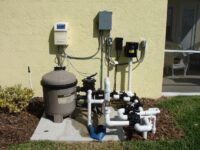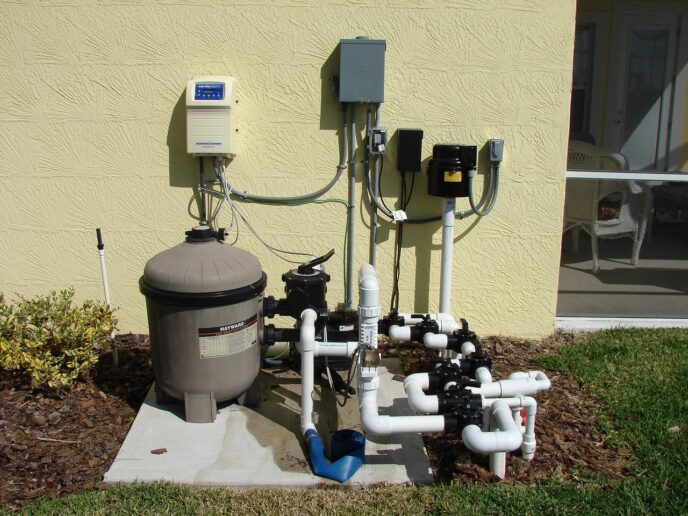
The Science Behind Over-Pumping: Why Your Well Fails and How to Prevent It

Sarah noticed it gradually: first, the shower took longer to reach full pressure, then the washing machine seemed to fill more slowly. Over six months, what started as minor inconveniences became a frustrating reality: her well wasn’t keeping up with her family’s water needs. What Sarah didn’t realize was that her well was being over-pumped, setting the stage for potentially catastrophic failure that could cost thousands to repair or replace.
Over-pumping is one of the leading causes of premature well failure, yet many homeowners don’t understand what it means or how to prevent it. Understanding the science behind this common problem can save you significant money and ensure a reliable water supply for years to come.
How Your Well Really Works
To understand over-pumping, you first need to grasp how wells function. Think of your well as a straw extending into an underground reservoir called an aquifer. This aquifer is like a giant underground sponge filled with water that slowly moves through soil and rock formations.
Groundwater is found in the rock and soil below the water table. When you’re not using water, the level in your well (called the static water level) stabilizes as water naturally flows in from the surrounding aquifer. When your pump turns on, it creates what’s called a “cone of depression” around your well, temporarily lowering the water level as the well siphons water from the nearby water table.
The key is balance: your well needs time to recover between pumping cycles. The rate at which water flows back into your well is called the recovery rate, measured in gallons per minute (GPM). Every well has a sustainable yield: the maximum amount of water it can produce continuously without depleting the source.
The Science of Over-Pumping
Over-pumping occurs when water is withdrawn at a faster rate than the well was designed for or the aquifer is able to produce. Imagine drinking through a straw so aggressively that you collapse the juice box. That’s essentially what happens underground when you over-pump a well.
When pumping exceeds the recovery rate, the cone of depression around your well deepens and widens. In cases of low water levels, this cone can cover a much larger area and continue to grow as the demand for water exceeds what the water table can provide. This creates a cascading series of problems that can permanently damage your well system.
More critically, excessive drawdown causes permanent changes to the aquifer itself. As the cone of depression increases and water is pulled from greater distances, loose debris gets drawn toward the well and can become caught in the perforations where water flows into the well. This plugging effect reduces the well’s ability to draw water from the surrounding aquifer.
The Domino Effect of Well Failure
Over-pumping rapidly accelerates three major types of well degradation: perforation plugging, mineral incrustation, and biofouling. Each creates a vicious cycle that worsens over time.
Perforation plugging occurs as debris pulled through greater distances gets stuck in the well’s perforated areas. Once these perforations become blocked, water can no longer flow through effectively, further reducing the well’s capacity and forcing even more aggressive pumping to meet demand.
Mineral incrustation happens when over-pumping causes changes in pressure and temperature within the well system. This can cause minerals naturally present in groundwater to form deposits on the casing, liner, and screens, slowing the rate at which water can flow through the fine pathways of the aquifer.
Biofouling develops when over-pumping increases oxygen levels in the well and aquifer, creating conditions where bacteria and other organisms thrive. These organisms form a biofilm (a gelatinous layer that traps sediments, minerals, and debris), further restricting water flow into the well.
The immediate effects include sputtering faucets, cycling pumps, and reduced water pressure. However, the long-term consequences can be devastating, often requiring complete well replacement at costs that can easily exceed $15,000.
Warning Signs: Catching Problems Early
Fortunately, wells rarely fail overnight. Recognizing early warning signs can save you thousands in repair costs.
The most obvious indicators include declining water pressure, pumps that cycle more frequently, and air sputtering from faucets. If your shower pressure has gradually decreased over months, or if you notice the pump turning on and off repeatedly during heavy water use, these are red flags.
More subtle signs include gradually increasing electric bills as your pump works harder to maintain pressure, changes in water clarity or taste as sediment gets stirred up, and pumps that run for longer periods during each cycle.
Keep a simple log of your pump’s behavior. Note how long it runs during typical activities like showering or laundry. If you see these times gradually increasing, it may indicate declining well performance that requires immediate attention.
Prevention: Protecting Your Investment
The good news is that over-pumping is entirely preventable with proper management and technology.
First, know your well’s capacity. Every well should have been tested when installed to determine its safe yield. If you don’t have this information, hire a qualified well contractor to perform a flow test. This will tell you the maximum sustainable pumping rate, which is typically much lower than the pump’s maximum capacity.
Practice smart water management by spacing out high-usage activities. Instead of running the dishwasher, washing machine, and taking showers simultaneously, spread these activities throughout the day. This gives your well time to recover between heavy demands.
The most effective solution involves automated well management systems that continuously monitor and adjust pumping rates. These systems harvest as much water as possible while leaving enough in the well to protect its health, drawing only what’s needed to fulfill household requirements.
Smart Technology Solutions
Modern well management technology offers sophisticated protection against over-pumping. Advanced systems use sensors to monitor water levels in real-time and automatically optimize pump operation to maximize water availability while preventing damage.
For example, companies like Epp Well Solutions have developed systems that slow down and elongate water pumping in a timed, consistent manner. This keeps the water table at a steady height without over-pumping, helping avoid problems like mineral incrustation and biofouling while ensuring adequate water supply.
These automated systems work by harvesting water during low-demand periods and storing it in pressurized tanks. During high-demand periods, the stored water maintains excellent pressure throughout the home while protecting the well from excessive drawdown. Unlike traditional constant-pressure systems, these smart systems respect the well’s natural recovery rate.
The Well Harvester technology, for instance, can automatically harvest and store 215 gallons or more for use throughout the day. By knowing the well’s actual output, these systems can calculate exactly how much water can be safely harvested and used each day, providing predetermined, reliable results.
Alternative Solutions and Their Limitations
When wells fail due to over-pumping, homeowners often consider hydrofracturing or drilling a new well. However, both options have significant drawbacks.
Hydrofracturing uses high water pressure to attempt clearing blockages in low-producing wells. While it can sometimes help bedrock wells by clearing debris from rock fractures, it’s expensive with no guarantees, requires permits, can affect neighboring wells, and may cause temporary water quality issues. It’s also not environmentally friendly and can increase contamination risks.
Drilling a new well is even more expensive, especially for deep wells, and provides no guarantee of better water quantity or quality. Permits are required, and you could end up with an even worse water situation.
Smart well management systems offer a more reliable, cost-effective solution that works with your existing well infrastructure.
When to Call Professionals
Some well monitoring can be done by homeowners, but professional assessment is crucial for accurate diagnosis and solutions. Contact a qualified well contractor if you notice any warning signs, especially declining pressure over time or frequent pump cycling.
A professional can perform comprehensive testing including flow rate analysis, water level measurements, and pump efficiency evaluation. They can also inspect the well structure and recommend appropriate solutions based on your specific situation.
When choosing a contractor, look for proper licensing, insurance, and experience with your type of well system. Ask for references and don’t hesitate to get multiple opinions for significant repairs or replacements.
Taking Action
Over-pumping is a serious threat to your well’s longevity, but it’s entirely preventable with proper understanding and management. The key is recognizing that your well has natural limits and working within them rather than against them.
Start by monitoring your current water usage patterns and pump behavior. If you notice any warning signs, don’t wait. Early intervention is always more cost-effective than emergency repairs. Consider investing in proper storage and automated control systems that can protect your well while ensuring reliable water availability.
Remember, a well-maintained well system can provide decades of reliable service, while an over-pumped well may fail in just a few years. The choice is yours, but the science is clear: respecting your well’s natural capacity through smart technology and proper management is the key to long-term water security and cost savings.
Your well is a valuable asset that deserves protection. By understanding the science behind over-pumping and taking proactive steps to prevent it, you’re investing in reliable water service for years to come.




